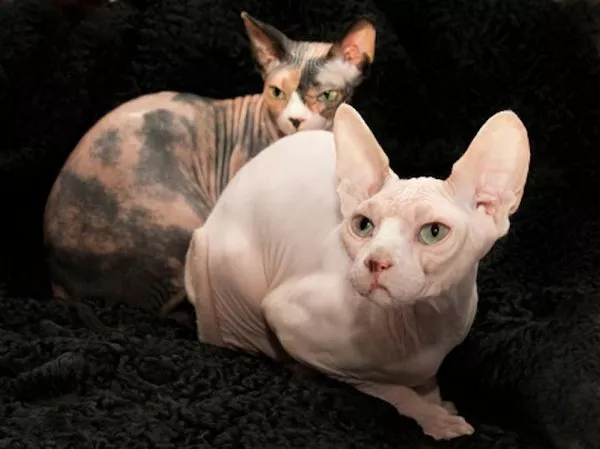Allergic reactions to cats are a common concern for many individuals who love feline companionship but suffer from allergies. In the search for a solution, potential cat owners often wonder if hairless cats, such as the Sphynx or Peterbald breeds, are hypoallergenic. While these unique and striking cats may seem like an answer to allergy woes, the truth about their hypoallergenic status is more nuanced. In this article, we will explore the factors that determine whether hairless cats can be considered hypoallergenic and provide insights into managing cat allergies when owning one of these breeds.
Understanding Cat Allergies
To grasp the concept of hypoallergenic cats, it’s essential to understand the root cause of cat allergies. Most people who are allergic to cats are not actually allergic to the cat’s hair or fur itself but to a protein found in a cat’s skin cells, urine, and saliva called Fel d 1. When a cat grooms itself, these allergenic proteins can become airborne and attach to tiny particles, like dust and dander, which can then trigger allergic reactions in sensitive individuals.
Hairless Cats and Allergen Production
Hairless cat breeds, like the Sphynx and Peterbald, are known for their lack of fur. Because Fel d 1 proteins are primarily found in a cat’s skin cells and saliva, many people assume that hairless cats are less allergenic. While it’s true that hairless cats have less fur to trap these proteins, they still produce them.
Skin Oils and Saliva: Hairless cats may have more exposed skin due to their lack of fur, and this skin can produce and transfer allergenic proteins when they groom themselves. Therefore, their saliva can still contain these proteins, which can be deposited on their skin during grooming.
Bathing and Grooming: Hairless cats require regular bathing to remove excess oils and debris from their skin. However, over-bathing can lead to increased oil production, potentially exacerbating allergen production. It is crucial to use a gentle, hypoallergenic shampoo and consult with a veterinarian about an appropriate bathing schedule.
Managing Allergies with Hairless Cats
If you are considering adopting a hairless cat but have allergies, there are several steps you can take to minimize allergic reactions:
1. Regular Bathing and Grooming: Bathing your hairless cat with a cat-specific, hypoallergenic shampoo can help reduce the amount of allergenic proteins on their skin. Be careful not to over-bathe, as this can lead to increased oil production.
2. Allergen Reduction: Keep your home as allergen-free as possible by frequently cleaning and vacuuming. Use a HEPA air purifier to trap allergens, and wash your cat’s bedding regularly.
3. Wash Your Hands: After interacting with your cat, wash your hands thoroughly to remove any allergenic proteins that may have transferred from their skin.
4. Create Allergen-Free Zones: Designate certain areas of your home as allergen-free zones where your cat is not allowed. This can provide a space for allergy-sensitive individuals to retreat to if needed.
5. Consult with an Allergist: If you are considering adopting a hairless cat but have severe allergies, consult with an allergist to discuss potential treatments, such as allergy medications or immunotherapy.
No Guarantees of Hypoallergenicity
It’s important to emphasize that no cat breed, including hairless ones, can be guaranteed hypoallergenic. Allergic reactions to cats vary greatly among individuals, and factors like the specific allergenic proteins, the cat’s grooming habits, and the individual’s sensitivity play significant roles.
Hairless cats, while potentially less allergenic than their furry counterparts, are not a guaranteed solution for cat allergies. It is crucial to spend time with a hairless cat before adoption to assess your level of sensitivity and potential allergic reactions.
Other Hypoallergenic Cat Breeds
If you’re determined to find a hypoallergenic cat, there are a few breeds to consider:
1. Siberian: Some individuals with allergies report fewer reactions to Siberian cats. They are believed to produce fewer allergenic proteins.
2. Russian Blue: These cats are known to produce fewer allergenic proteins, making them a potentially better choice for allergy sufferers.
3. Balinese: Balinese cats are similar to the Siamese breed but are believed to produce fewer allergenic proteins.
Conclusion
In summary, hairless cats, such as the Sphynx and Peterbald breeds, are not entirely hypoallergenic. They still produce the allergenic protein Fel d 1, primarily in their skin and saliva, which can trigger allergic reactions in sensitive individuals. However, due to their lack of fur, some allergy sufferers may find them more manageable than cats with traditional coats.
If you are considering adopting a hairless cat and have allergies, it is essential to take proactive measures to minimize allergen exposure. Regular grooming and cleaning, as well as consulting with an allergist, can help you enjoy the unique companionship of a hairless cat while managing your allergies effectively. Ultimately, the hypoallergenic status of any cat breed varies from person to person, and individual sensitivity should be considered before bringing any cat into your home.


























